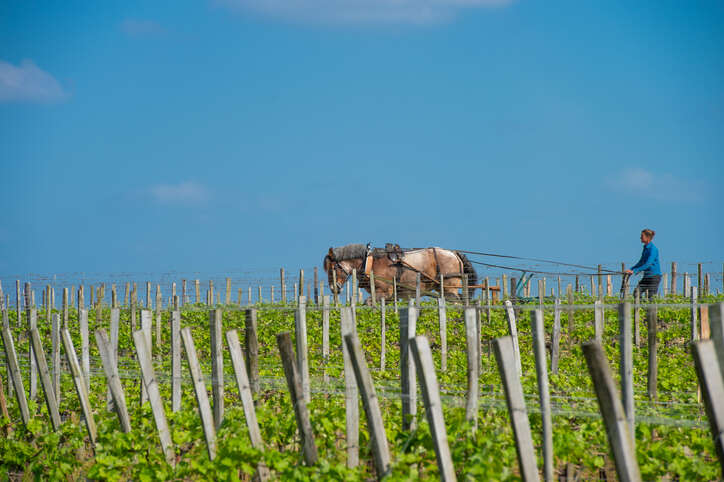
Bordeaux has led the way in confronting some of the many challenges facing winegrowers in France, says Michel Bettane. But in other respects it lags far behind.
Every wine-growing region in France is worried about the future. The considerable impact of climate change has brought all agricultural practices into question. But it will be harder still to convince civil society to defend the agriculture that is helping to preserve our countryside, our expertise, and our workers from the maneuvers of the health lobby—the enemy of even a molecule of alcohol to escape from the laboratories of the pharmaceutical firms.
On my regular travels through our vineyards, I don’t always see smart responses to the challenges faced by growers; ideologies are not well equipped to address them. In this respect, Bordeaux encapsulates both the worst and the best—the worst in terms of its inept response to addressing the challenges faced by its most vulnerable producers. The region refuses to make adaptations to a style that no longer suits consumer tastes or to a distribution system that is ill equipped to deal with thousands of brands that try to pass themselves off as châteaux.
But those assets that have created Bordeaux’s reputation as a source of high-quality wines have also been at the heart of the best responses in the region. I have witnessed the astonishing transformation of a system of viticulture that was once extremely conservative. There are hundreds of properties in the Bordeaux region that are leading the way for producers elsewhere in France. More and more often, illustrious properties are certified organic or biodynamic. Among the crus classified in 1855, six châteaux have biodynamic certification, nine have organic certification, and 13 more are currently in conversion. A further 63 properties have reached level three (the highest level) of the haute valeur environnementale certification. And many others are even further down the track, but the clumsy way in which the certification criteria are managed means that they can’t officially acknowledge their achievements on their labels—or a justifiable pride prevents some from seeking certification in the first instance.
The use of herbicides has pretty much disappeared from all cru classé vineyards. Trials of interrow vegetation are rising. Pruning and trellising are much more considered, the only limits being the scarcity of trained agricultural labor. Those who enjoy financial comfort can afford better equipment, which helps them achieve greater precision and to reduce their use of products and their energy footprint. Soils are less and less compacted, and the process of dividing vineyards into ever-smaller parcels—a notion that has been encouraged by the multiplication of vinification tanks—has obliged producers to gain a better understanding of their terroirs.
It also follows that winemaking is improving, as a result of the increasing knowledge of all the small interactions that add up to the creation of wines that are a summary of the potential of the grapes. Not only is the health of each individual berry checked, but so is its level of ripeness; and thanks to the increasing finesse of destemming machines, perfectly intact berries, resembling nothing so much as beautiful grains of caviar, are despatched to the tanks. Nowhere else have I seen so much respect paid to grapes or so much precision when it comes to picking the right harvest dates.
Bordeaux progress
With the high levels of ripeness that climate change has afforded, there is no longer any need to push the grapes to extremes, and the wines of today don’t lack concentration but retain richness of both tannin and texture, making them ever more seductive in their youth. I am a strong supporter of producers who follow this process and then add levels of texture and structure by means of the judicious extraction and use of press juice. This is a level of refinement that is seldom achieved in other red-wine-producing regions.
Big progress has also been made in the way wines are matured. The oaky character of the wines of the ’80s has made way for wines in which the oak is well integrated. This has not, alas, been without its attendant inconveniences. A rigorous selection process to find the best lots for the top wines results in lower production volumes and pushes up prices, and it sometimes goes hand in hand with the marketing of second and even third wines that may not be of an appropriate quality level or worthy of a property’s first wine. The only drama is the astounding markup imposed by our restaurateurs, who therefore prevent people from drinking them in their establishments and reinforce the notion that these wines are expensive. It’s a shame, because the best of these wines are approachable and delicious, even in their youth, which makes them ideal mealtime companions.
The commercial dynamism of our distributors could also be improved. By focusing on the best-known brands, those that make them the most money, on the Place de Bordeaux, are forgetting its responsibility toward the region’s other producers and are contributing to the economic decline of more than half of the region’s vineyards. On the other hand, the producers are doing their best to balance this indifference by their courageous approach to protecting both the public and the quality of their wines. Whether they are family-owned domaines or properties owned by large banking or insurance groups, they are developing an intelligent approach to wine tourism. Wine lovers enjoy the opportunity to participate in the kind of collective tastings that are organized in many countries, as well as a range of local sporting and cultural events, that help promote their popularity. In other words, it’s the complete opposite of the kind of speculative pricing and the other spoiled whims in which the stars of other regions indulge. (I’m sure you can see which way my finger is pointing.)






